Kase Bright Star Focus Tool Review: Is It Worth It?
I recently received a complimentary 82mm Kase Bright Star Focus Focusing Tool to evaluate and review.
A little background first: I am an astrolandscape photographer. I teach night photography, and I evaluate photographic gear with a special interest in the gear that assists with night photography. I own various Kase filters and find them to be well-built and overall impressive. I use both the magnetic Revolution series filters and threaded filters, mainly their ND filters, UV, and light pollution filters. These filters are a staple in my kit.
First Look
The filter at first glance appears to be typical Kase. Well-machined aluminum frame, but the filter lens is made of plastic. The filter can be rotated, but it is very stiff and does not easily move until it is attached to the lens.
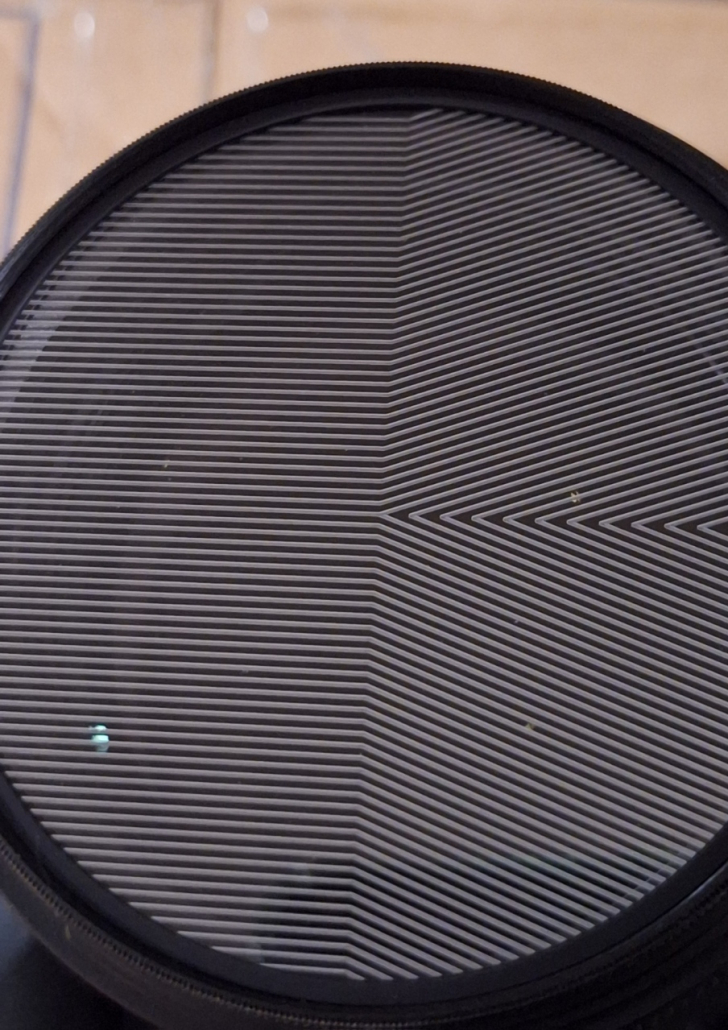
The Tests
Several tests were done. The first tests were performed with a Nikon Z9 and a Viltrox 135mm f/1.8 LAB Z lens. The other tests were done with a Nikon Z9 and a Viltrox 16mm f/1.8 Z lens with a step-up ring. As expected with Kase filters, there was no binding or coarse threads when attaching the filter.
I compared the Kase Bright Focus Focusing Filter with the Focus on Stars filter. Focus on Stars filters are available for wide/super wide-angle lenses and for telephoto lenses. The Kase filter doesn’t have a specification regarding a focal length application.
I used the wide/super wide-angle Focus on Stars filter for this comparison on both the 16mm and 135mm lenses. I later used the telephoto lens Focus on Stars filter on just the 135mm lens. The results were the same using the Focus on Stars wide-angle and telephoto filters. On both lenses, the calibration pattern was clearly visible and easy to assess. Focusing filters are helpful for astrolandscape photography and also deep space photography. The 135mm focal length is ideal for the latter.
When I looked at my LCD, I noticed that the Kase filter appeared not to affect the exposure. Compare the histograms in the next sets of images. The second set of images is with the Focus on Stars filter attached. The Focus on Stars darkened the frame a bit. Both images were zoomed in at the same magnification for comparison. The corresponding uncropped images are below.
The Kase calibration pattern appears to be similar to the “Focus on Stars” filter, but that’s where the similarities end. The camera settings are the same for both the Kase Bright Star Focusing Tool test and the comparison using the Focus on Stars. The Focus on Stars pattern is sharp and clear. Both frames are straight out of the camera, shot with the same settings. No adjustments were made. The screenshots are from Adobe Camera Raw.
Tests with the 135mm Lens
📷 – Nikon Z9 | 🔘 – Viltrox 135 mm LAB Z | 🎞 – ISO 1000 | 🔘 – f/1.8 | 🕒 – 1/1.3 seconds
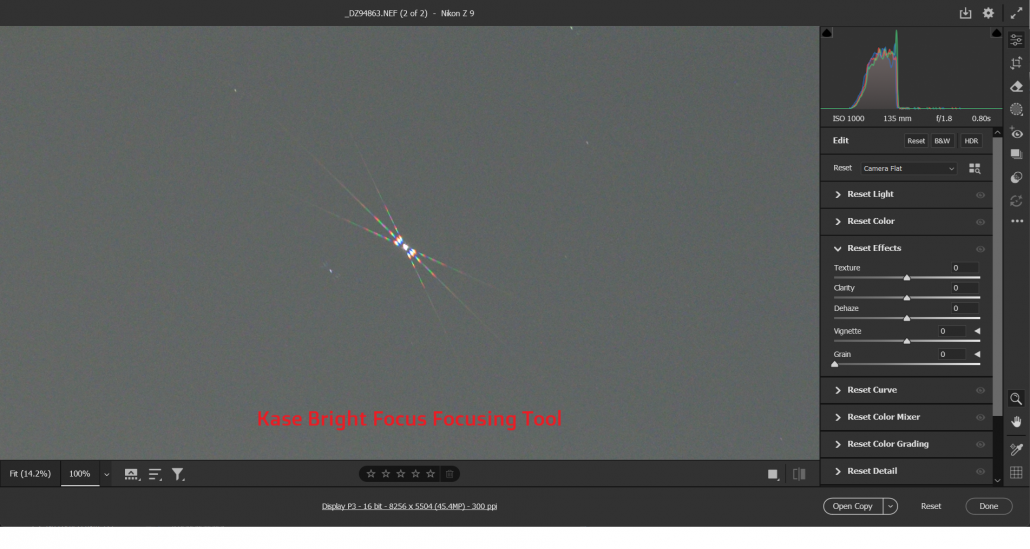
Uncropped image, Kase Bright Focus.
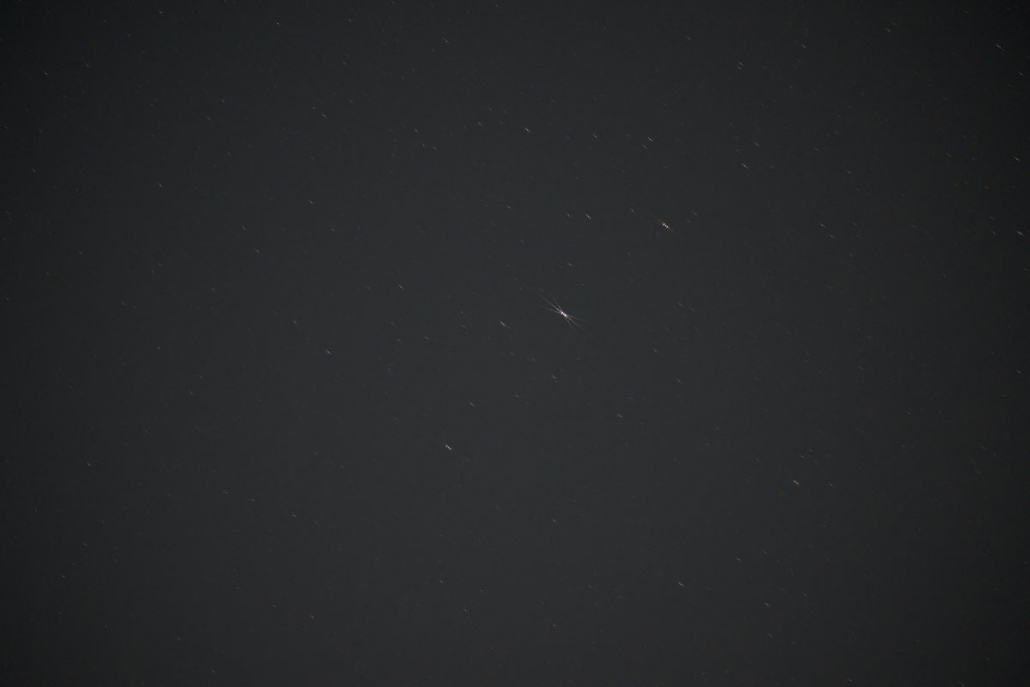
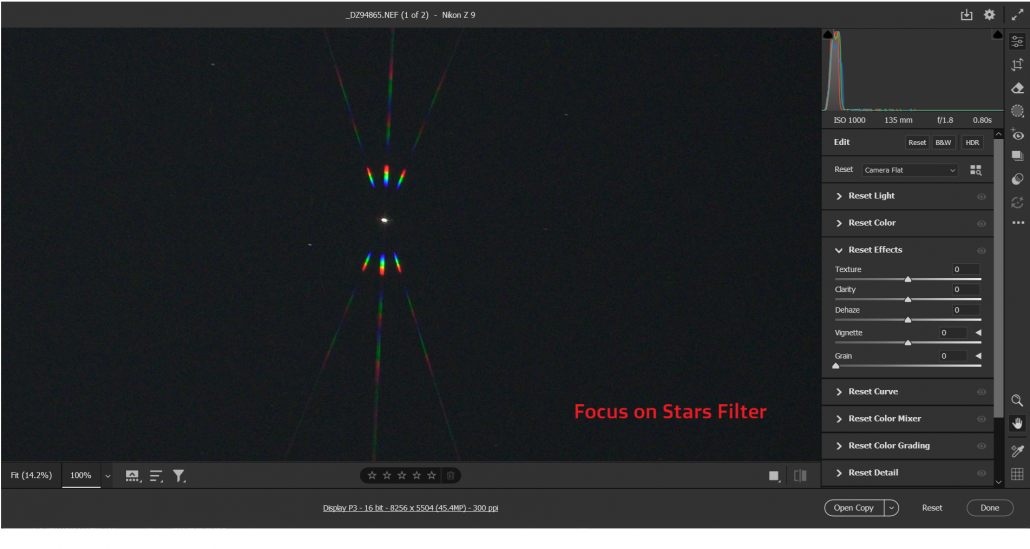
Uncropped image, Focus on Stars wide-angle filter.
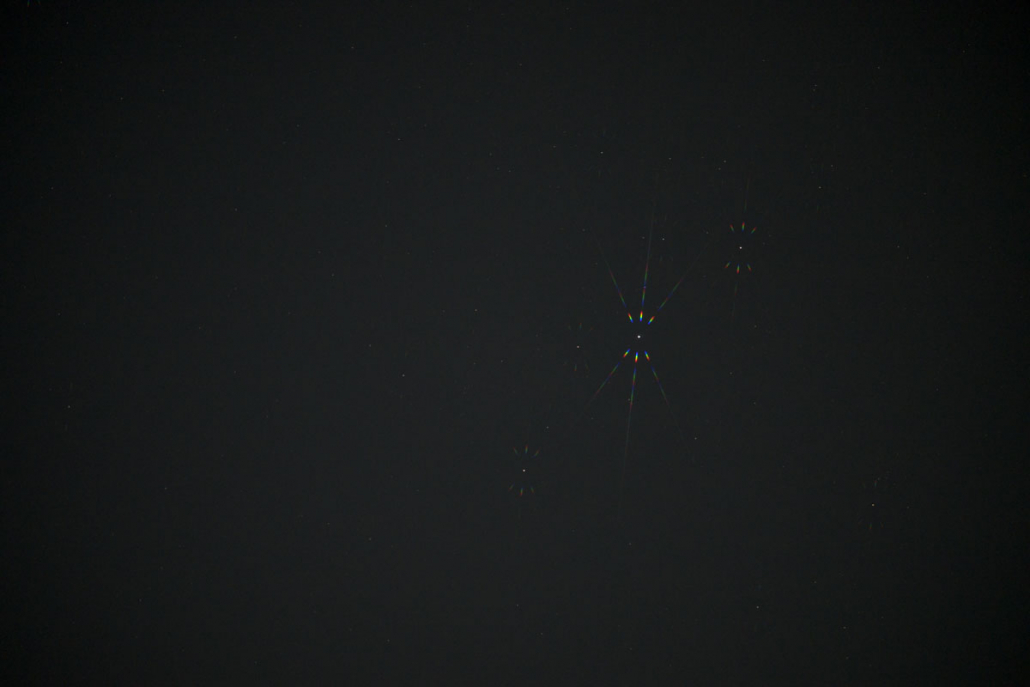
Tests with the 16mm Lens
The next series of tests was with the Viltrox 16mm lens. I found it impossible to achieve focus with the Kase filter.
📷 – Nikon Z9 | 🔘 – Viltrox 16 mm | 🎞 – ISO 1600 | 🔘 – f/1.8 | 🕒 – 8 seconds
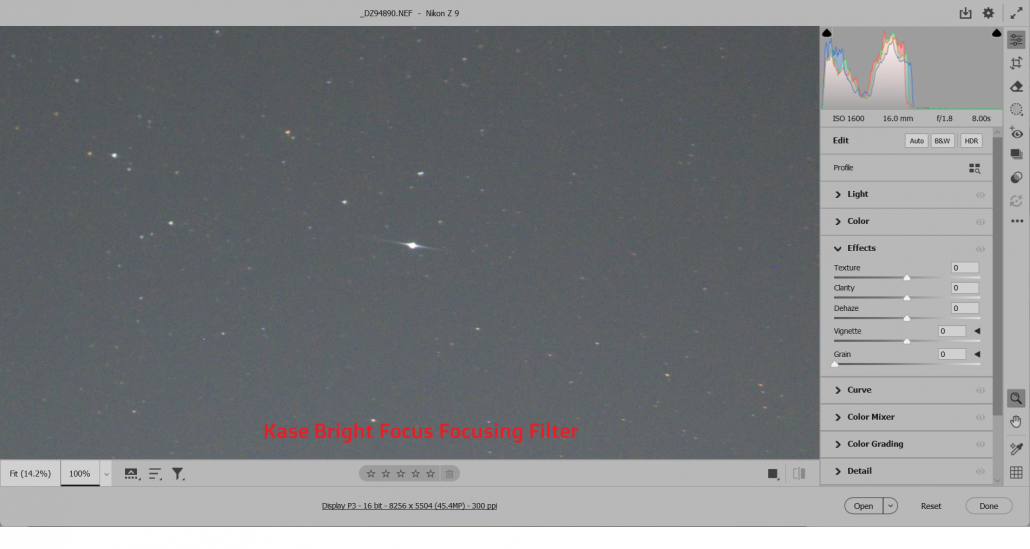
Uncropped, Kase Bright Focus Filter on a Viltrox 16mm lens. No calibration pattern appears.
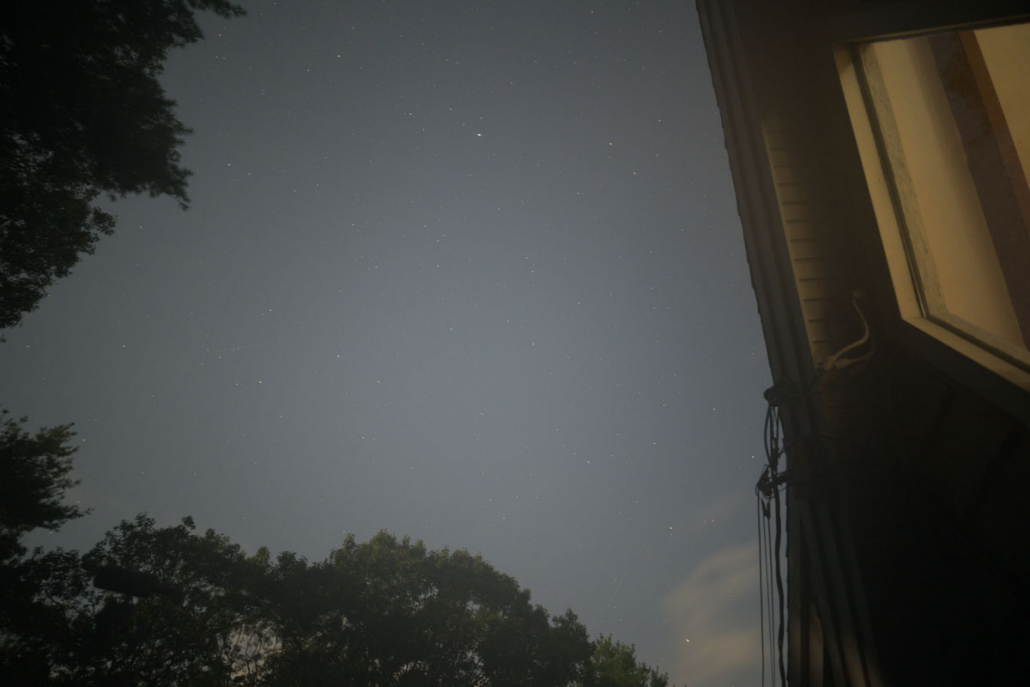
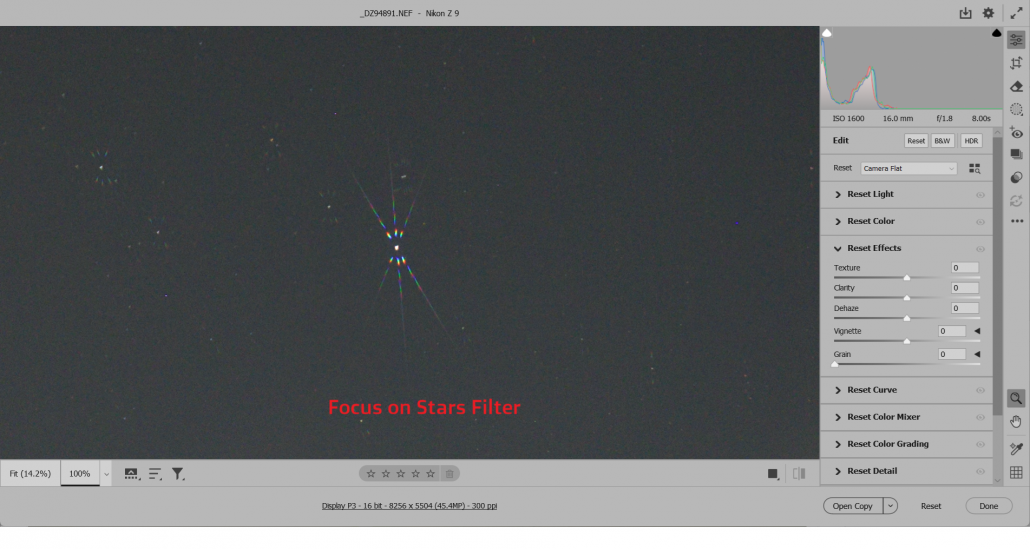
Uncropped, wide-angle Focus on Stars Filter on a Viltrox 16mm lens. The calibration pattern is evident.
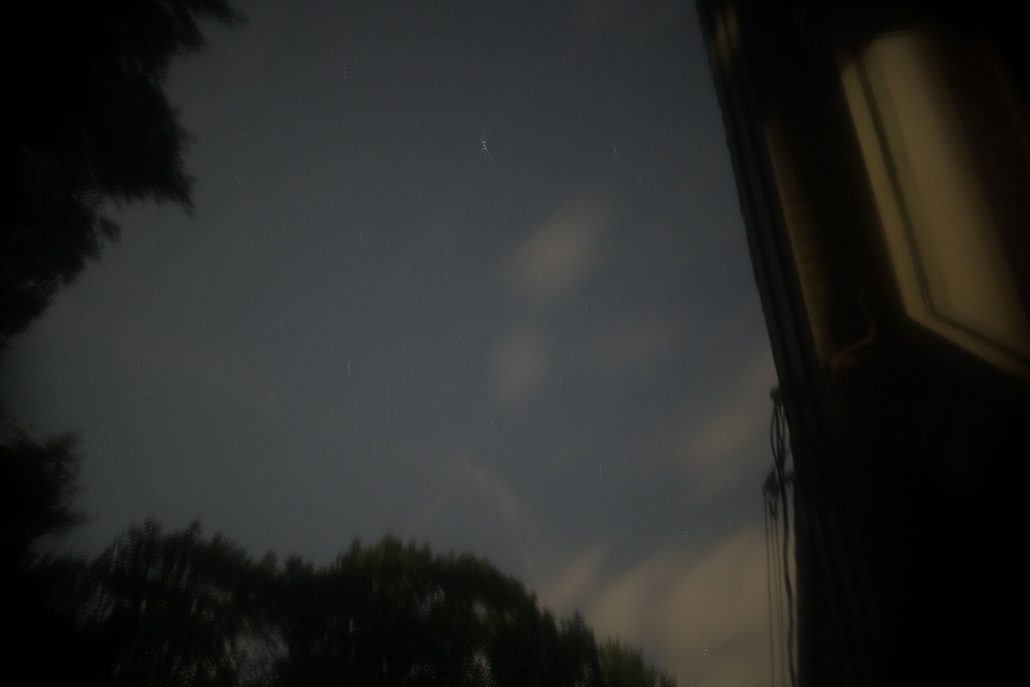
Results
Unlike the Focus on Stars filter, the Kase Bright Star Focus Focusing Tool is not efficient for focusing stars. I found it challenging to determine if the calibration spikes were evenly spaced because the pattern was never sharp enough to see the quality of the focus. Although it creates a calibration pattern that should help determine focus, the pattern is fuzzy and difficult to assess, no doubt due to the filter being plastic and not glass. It is not much better than focusing a star without a tool or with a standard Bahtinov mask.
The Kase Bright Star Focus filter fared better on the 135mm lens than it did on the 16mm lens, where it did not produce a calibration pattern at all, regardless of where the filter was rotated. Based on the marketing material for this filter, it appears it is geared towards landscape photographers, yet it fails to work on wide-angle lenses, the ones that landscape photographers utilize the most.
Stars are difficult to focus and it is one of the biggest challenges of night photography. The Kase filter is basically a more refined Bahtinov mask, but just as a Bahtinov mask for a telescope used on a camera lens fails to produce a clear pattern, this filter fails as well. It is not sophisticated enough to properly do the job on complex photographic optics. I spent as much time trying to get the calibration pattern correct as I would have spent focusing stars by trial and error.
The Kase Bright Star Focus Focusing tool is sold separately, but is also bundled with the Kase Neutral Night Light Pollution Filter. The light pollution filter, however, fares much better. The filter produces increased contrast and does a good job filtering light pollution. The result of using this light pollution filter is that more and more clearly defined stars are captured. I tested the filter in a Bortle 5 area (suburban light pollution). The challenge with light pollution filters is that they work well for cityscapes, but many brands are often a hit or miss for astrolandscapes.
So be aware of the bundled set of filters that includes the Bright Star Focus Focusing tool.
Night Shades – A Guide to Photography after Dark
© Silvana Della Camera
Join the Night Sky Newsletter
Exclusive astrolandscape tips, infrared secrets, and early workshop alerts.
To learn about upcoming workshops and tips on photography, consider subscribing to my website.
Taking photos and want to make them more compelling?
Art isn’t just for walls. Art is also to hold in one’s hands.
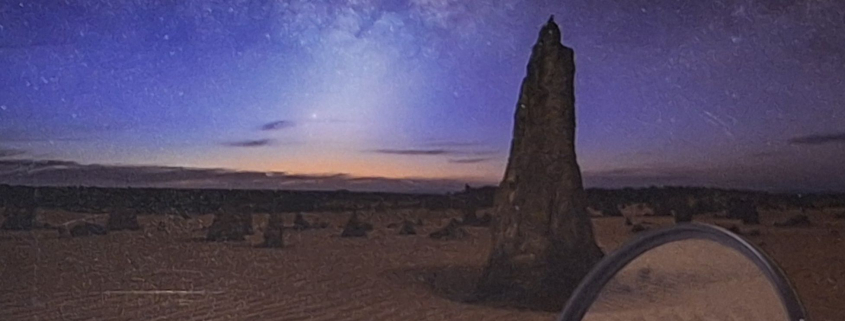
 Silvana Della Camera
Silvana Della Camera

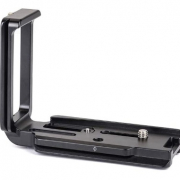

 Silvana Della Camera
Silvana Della Camera
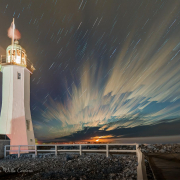 Silvana Della Camera
Silvana Della Camera

Leave a Reply
Want to join the discussion?Feel free to contribute!